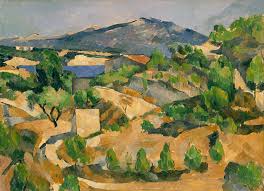The past year or more has been hard for everyone, but especially in the art world. Yet I am constantly impressed at how resilient and inventive artists are and how inventive they are in dealing with today's conditions. I was reminded again of this just now as I opened up this blog and read one of the entries alluded to by Paul Schmelzer in his blog, Eyeteeth (http://www.eyeteeth.blogspot.com/). It was about artists in Detroit who are setting up home in houses they have been able to purchase for $100 from the City, which is dealing with a glut of foreclosed homes. Artists are grouping together in such neighbourhoods in different cities - playing the all-important role of pioneers as they do so often.
Another aspect of artists' inventive flexibility was covered in a long article in this week's Christian Science Monitor (http://www.csmonitor.com/) entitled "Bedroom, kitchen, art gallery". Contributor Mark Guarino told of artists who are opening up their homes and apartments as galleries in Chicago, Dallas, San Francisco and beyond. Other galleries, temporary for the most part, are popping up in vacant store fronts, hair salons, gas stations, or even for single events to try to attract new publics for realtors selling real estate. Everyone benefits. The divisions between traditional galleries, non profit spaces, alternative exhibition spaces or underground galleries are disappearing as art lovers and consumers grow more accustomed to viewing art in all the interstices of life. Artists, too, are imaginative enough to find new places to make and exhibit art, no longer necessarily working in the traditional contexts.
It all really boils down to how important art is for each and everyone of us. People who consider art and art education to be a passion and a necessity for the enhancement of life will adapt and thrive in this new art world. In doing so, the public is actually confirming what has been shown in economic study after economic study: that art, in all its manifestations, is a wonderful economic stimulus to an area. One recent study, commissioned by the Columbia Museum of Art in Columbia, SC (http://www.columbiamuseum.org/) showed that the Museum and spending by museum visitors generated more that $23 million in economic activity in the Columbia area in 2008. Not only does the Museum itself buy goods and services locally, but the Museum Shop generates a lot of business, while the art tourism and arts education are major factors in Columbia's economic well being. I can attest to that personally, when I visited the Columbia Museum's wonderful exhibition, "From Turner to Cezanne", exhibited there from March to June this year. A hotel stay, restaurants, museum entries and purchases in the Museum Shop, gas stations, and so on - art does bring in income for an area.
Paul Cézanne The François Zola Dam, ca. 1877 Oil on canvas, (Image courtesy of the National Museum of Wales)
In other words, we artists do indeed help this faltering economy turn around in innumerable ways. Hurray for artists!
